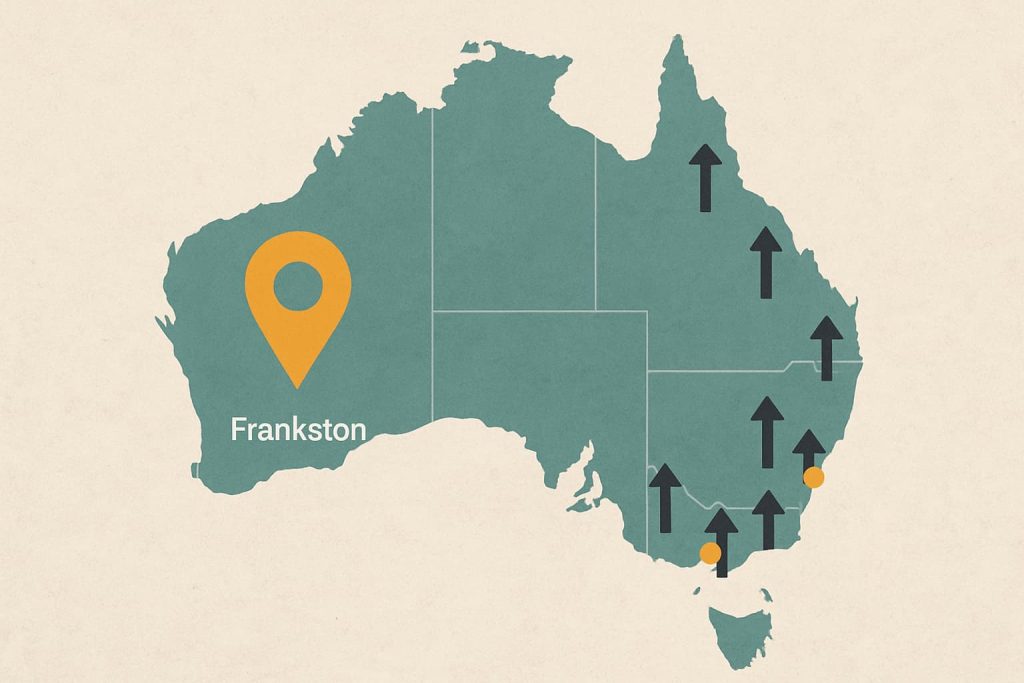The Reserve Bank again lifted the official cash rate this week and it has prompted calls for the home loan serviceability buffer to be reduced.
It comes after big lender Westpac warned that a good portion of its home loans will soon exceed the upper limit of the serviceability buffer they were written against.
Lenders currently use a buffer of 3 per cent to guard against rate rises or changes in financial position, but the relentless rate rises from the RBA mean this buffer is being chewed up very quickly.
The Australian Prudential Regulation Authority has imposed the current 3 per cent buffer since 2021, and it means if borrowers want to take out a home loan at 5 per cent, they need to prove to their lender that they would still be able to service that loan with the buffer included, in other words, at 8 per cent.
These buffers obviously then reduce the borrowing power of prospective home buyers and investors.
Since the RBA went on their current 10-in-a-row rate rise hike in May 2022, many loans taken out prior to that would now be exceeding their serviceability buffer after the cash rate rise of 325 basis points between then and now.
These borrowers are now facing mortgage stress and serous doubts over their ability to service their loan.
It has led to some economists calling for a reduction to this serviceability buffer to put the brakes on the sliding property market and to prevent a possible credit crunch.
AMP chief economist Shane Oliver is one such economist.
“Right now you apply the 3 per cent buffer to mortgage rates up at 6 per cent, you’re up around 9 per cent,” he told savings.com.
“The last time mortgage rates were that high was prior to the GFC. It seems very unlikely we will go back to anything like that from here.”
Finance Brokers Association of Australia managing director Peter White said APRA’s 3 per cent buffer is creating ‘mortgage prisoners’ while rates keep rising.
“More borrowers are becoming mortgage prisoners, locked into a situation where they can’t access a better deal because they don’t meet the inflated assessment rate,” he told Broker News.
“Others may be forced into selling their homes because the excessive buffer rate holds them prisoner to their current lender as rates rise.”
Mr White said a buffer would be better set at around 1.5-2 per cent, to allow borrowers to refinance.
“A 3 per cent buffer was appropriate in the past because interest rates were at an all-time low and were always going to rise significantly, and this protected both the banks and the borrowers, but we can’t live in the past,” he said.
APRA say they are looking at the buffer closely, but look set to keep it at 3 per cent for the rest of this year due to ongoing rate rises, inflation and the shaky labour market.
“The events of recent years have emphasised that conditions can change rapidly,” APRA chair John Lonsdale said.
“We continue to closely monitor the outlook for credit growth, asset prices, lending conditions and financial resilience.”
Commonwealth Bank CEO Matt Comyn said the perfect time for APRA to reassess its serviceability buffer would be at the point that interest rates peak.
“We do think it will be worthwhile reviewing that, as we get close to or at the top of the interest rate cycle,” he told the Property Tribune.
“That has seen a reduction in borrowing capacity, but that hasn’t been unhelpful overall as there have been lower levels of higher debt-to-income loans in the market.
“But it will be prudent at the appropriate time, over the course of the year, to review that setting” he said.



